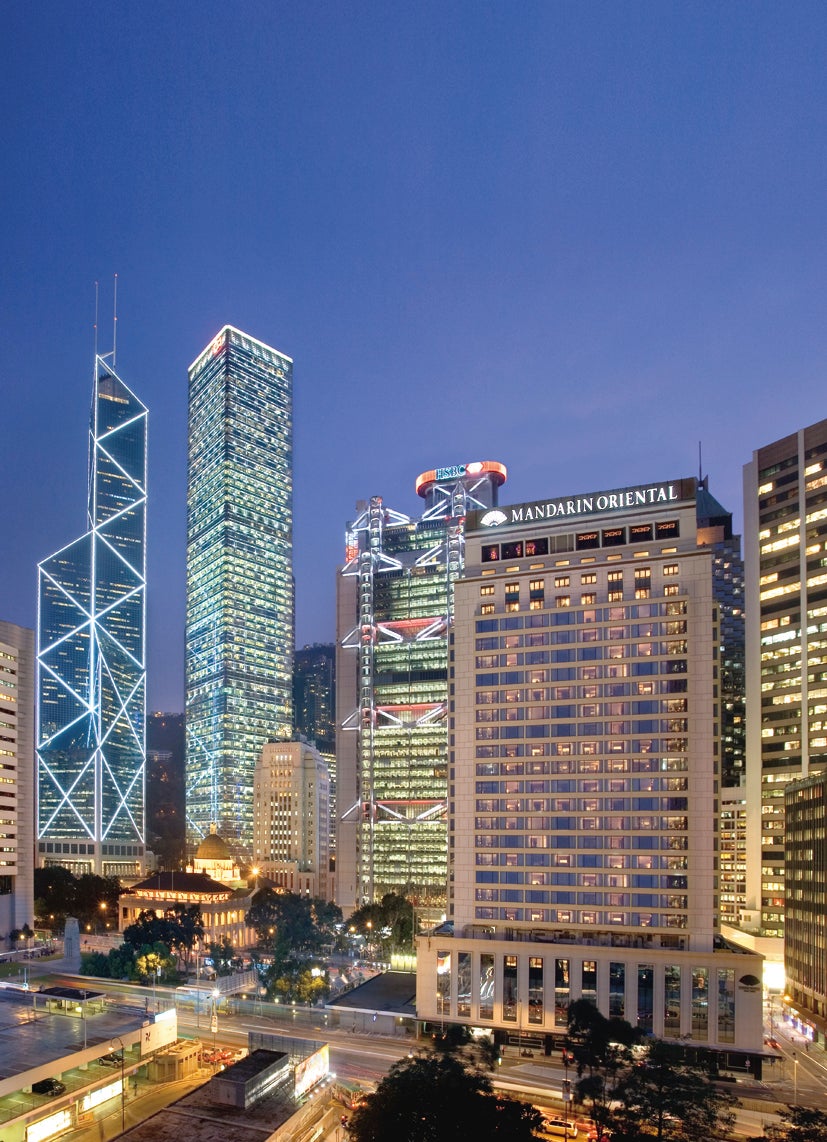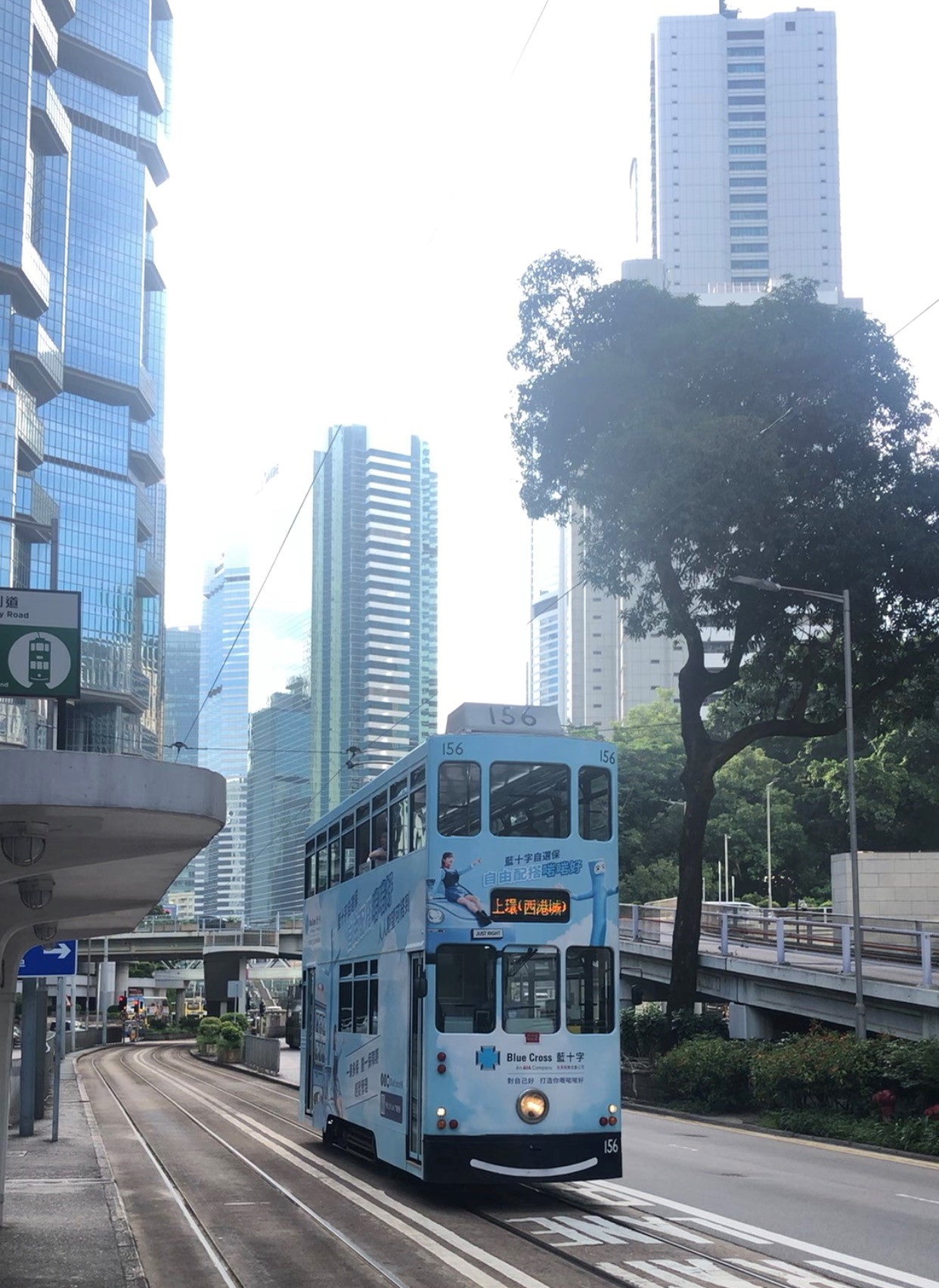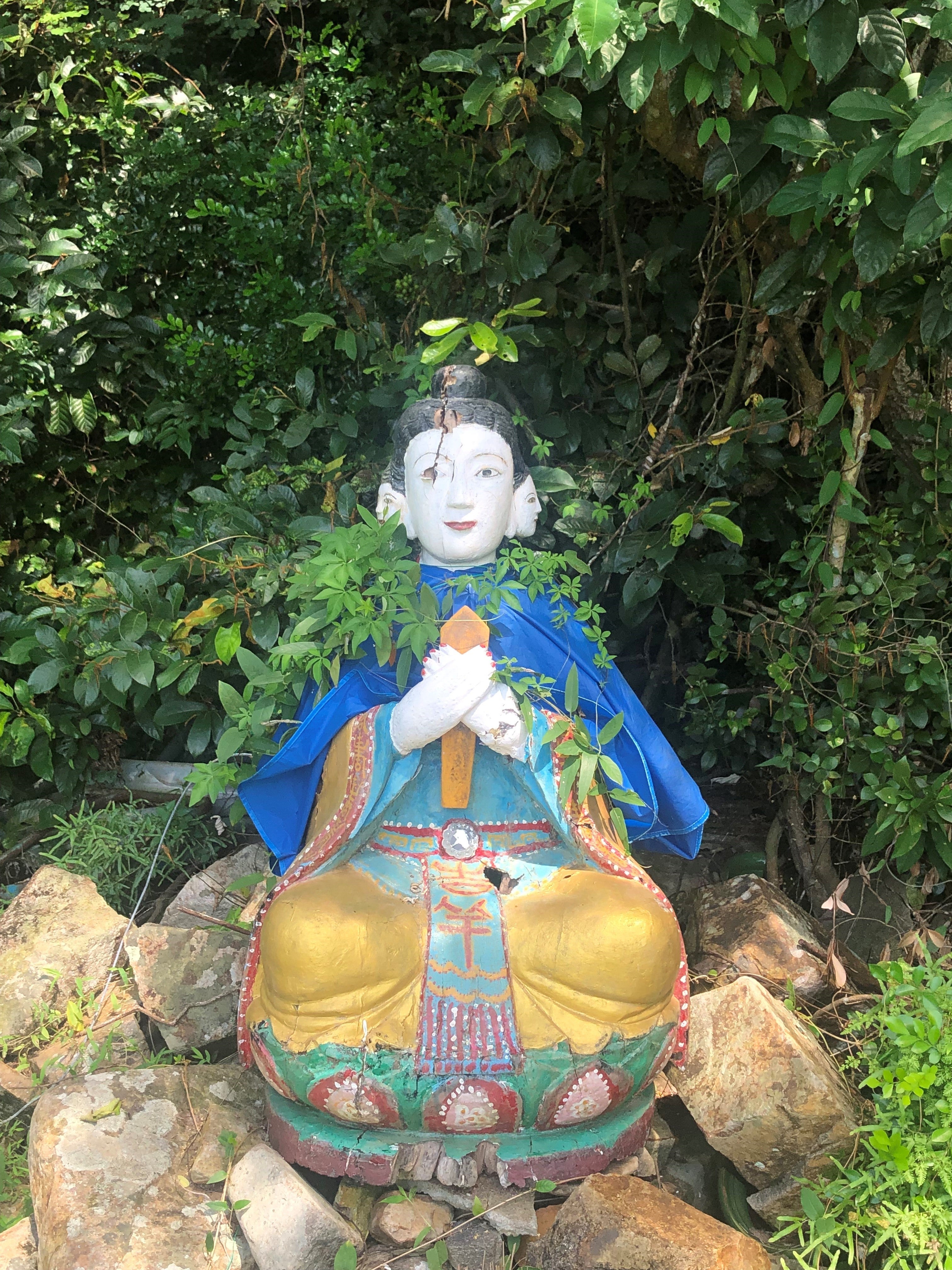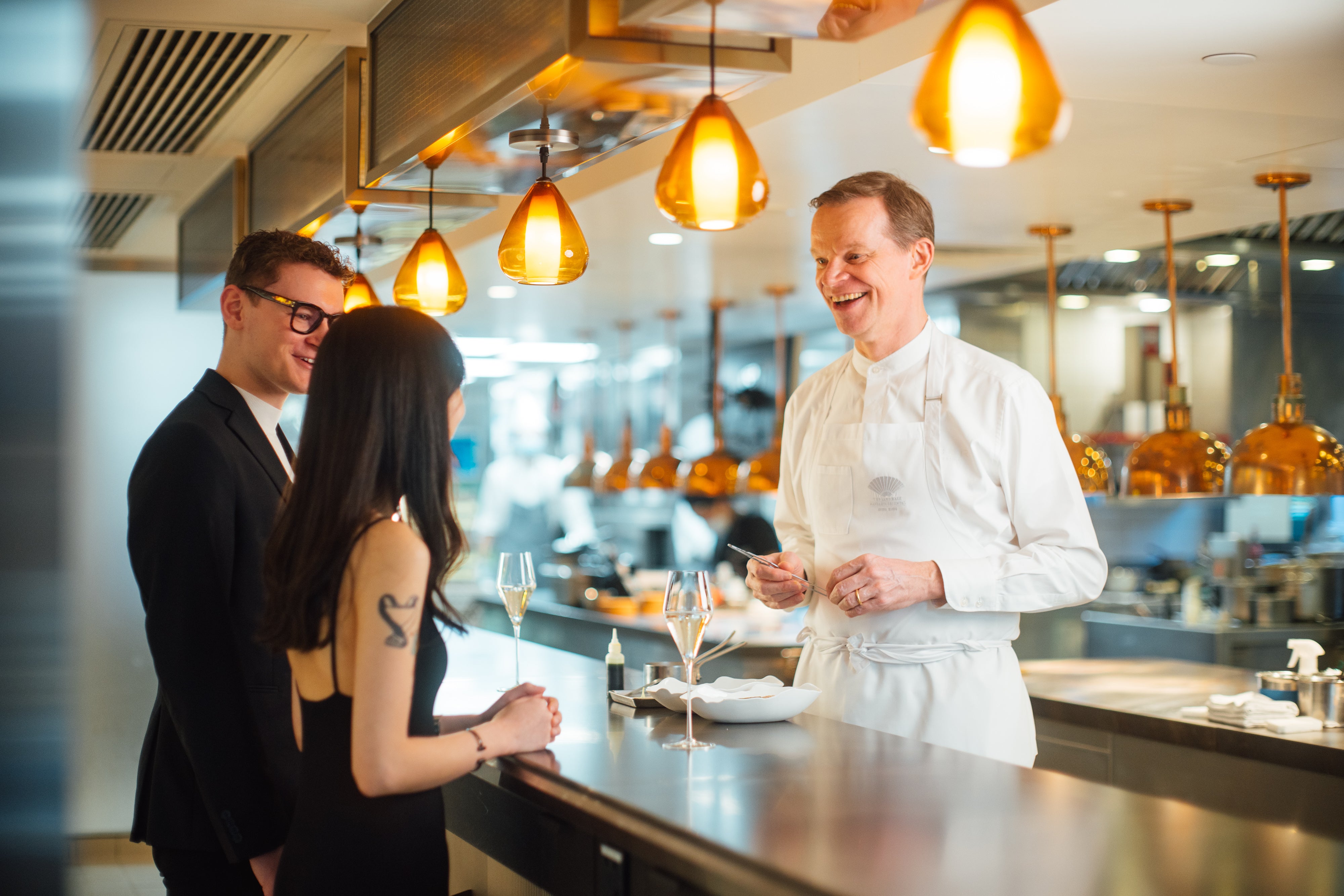
Sign up to Simon Calder’s free travel email for expert advice and money-saving discounts
Get Simon Calder’s Travel email
Get Simon Calder’s Travel email
Hong Kong has two faces. The first glances westwards towards Great Britain, colonial gatekeeper for more than 150 years of this 426-square-mile territory comprising a densely populated peninsula and 236 islands.
The other face is tilted expectantly – and perhaps nervously – northwards to the People’s Republic of China, custodians of Hong Kong since July 1, 1997 under the Sino-British Joint Declaration, with an explicit understanding that the region will continue self-governance for at least 50 years.
Almost three decades into the agreement, the two faces continue to trade pleasantries during my first-time visit. Unlike mainland China, UK tourists don’t require a visa costing upwards of £130 to stay in Hong Kong, international credit cards are widely accepted and internet search engines and social media sites are accessible, but with some local restrictions.
The past few years have been challenging for the neon-lite city, due to a combination of Covid closures and political demonstrations. But the city feels calm and settled, ushering in a renewed sense of optimism for the future.
National airline carrier Cathay Pacific is increasing daily flights from the UK in 2025 (five from London Heathrow, three from Manchester) with newly retrofitted Boeing 777-300ER aircraft that deliver cosmetic and ergonomic improvements across all three cabins for a smooth landing into the island of Chek Lap Kok.

Read more: The best hotels in Hong Kong for views, luxury and fine dining
I’m personally glad to avoid the low-altitude, 45-degree sharp turn required to approach the old Kai Tak Airport runway, flying so close to high-rise flats that passengers could see laundry drying on rooftops.
Vertiginous thrills of a different kind await on Sky Terrace 428 at Victoria Peak. The highest viewing platform in Hong Kong provides breathtaking panoramic views of the islands until 10pm each night (adults HK$75/£7.45, children HK$38/£3.80).
The 1.4km journey to the summit on one of the world’s oldest funicular railways takes under 10 minutes in handsome two-carriage trams, which serenely ascend a 25.7-degree incline on the steepest part of the route (return ticket adult HK$88-108/£8.75-£10.75, children HK$44-54/£4.40-£5.30).
From this vantage point, more than 500 gleaming skyscraper fingers (the most in the world) claw majestically towards heaven, divided by Victoria Harbour where a nightly Symphony of Lights illuminates the waterside skyline with lasers, searchlights and LED screens to a recorded musical score.

Read more: How Thailand’s elephant camps are transitioning to a cruelty-free future
Descending back into the Central region, the Mandarin Oriental has been an elegant and silent witness to the dramatic land reclamation of Victoria Harbour over the past three decades.
The flagship of the global hotel chain celebrated its 60th anniversary last year and remains a comforting beacon of luxury in a changing skyline that now includes the newly opened Henderson building, designed with curving glass to evoke a soon-to-blossom Hong Kong orchid tree.
Economic divisions are immediately evident across the water in Kowloon, once renowned for a lawless walled enclave of over 30,000 residents, which the British demolished in 1994.
Handprints of more than 100 celebrities from Hong Kong’s celebrated film industry form an Avenue Of Stars in the Victoria Dockside cultural district where designer stores beckon come hither. The grandiose K11 Musea retail and art space showcases quirky installations over 10 floors, including Joan Cornella’s satirical bronze sculpture CCTV.
Walk up Nathan Road to Tung Choi Street, close to Mong Kok Mass Transit Railway (MTR) station, and the eye-watering price tags are replaced by the too-good-to-be-true bargains of Ladies’ Market, a one-kilometre stretch of open stalls heaving with fake Louis Vuitton handbags, electronics, silk pyjamas and colourful tat.
Public transport is cheap and stress-free using a rechargeable Octopus smart card, available from convenience stores and machines at stations along the 13 colour-coded lines of the MTR.
The card covers trains, buses, ferries, coaches and trams, known affectionately as Ding Dings because of the warning bell that sounds when the vehicle is about to stop.

Read more: The best countries to travel to in Southeast Asia
Exploring the city on foot with a knowledgeable bilingual guide from Hong Kong free tours unearths fascinating stories of craftsmanship before and after the handover, like 66-year-old Yam Wai-sang, the second-generation owner of Kwong Wah Printing Company denoted by a hand-painted mural on the sliding metal door in Sheung Wan.
He runs the shop as a living museum, showcasing a working Heidelberg Windmill printing machine that has been lovingly used for more than 50 years. Yam is something of a celebrity, appearing in the music video for Norwegian DJ Alan Walker’s song Sing Me To Sleep, which he proudly shows me has over 720 million views.
The changing expressions of Hong Kong are captured in exquisite detail on the walls of the Blue Lotus Gallery, situated on an unassuming corner in the laidback Sheung Wan district.
Run by Ghent-born director Sarah Greene and energetically prowled by her two dogs Lulu and Chippy, the airy space explores Hong Kong’s culture and identity through different photographic lenses including Fan Ho’s low-angle 1959 black and white shot of Central Market, popular today for selfies.
Stefan Irvine’s recent show, Abandoned Villages Of Hong Kong, highlighted the isolated communities that once subsisted on fishing and farming but now resemble overgrown relics.
One derelict property, reclaimed by Mother Nature, is visible on an afternoon hike from Hong Kong UNESCO Global Geopark, site of an S-shaped column of rare light-coloured hexagonal rocks formed after millions of years of volcanic activity.

Read more: The best Vietnam holiday destinations
I trek leisurely along alabaster stone pathways that slither like sun-baked discarded snake skins through the verdant wilderness.
One shady route connects the golden sand beach of Pak Lap Village, where dragonflies the colour of caramelised sugar swarm and tourists take to the water in kayaks, and the 18th-century Tin Hau Temple in Leung Shuen Wan built by fishermen and villagers.
A ferry or chartered speedboat through the aptly named Rocky Harbour to tourist-thronged Sai Kung Pier is a perfect final flourish. Incongruously, a recently opened M&S food store gleams pristine between traditional vendors close to the harbour. It’s the only time on my trip I silently lament a British intrusion.
Where to eat
The two faces of Hong Kong speak the same languages when it comes to food: simplicity and excellence. The region boasts almost twice as many three Michelin-starred eateries as mainland China and only two fewer than the UK.
A heady fusion of traditional Cantonese cooking and European influences is evident at different price points, from the ubiquitous dai pai dongs (no-frills open-air food stalls passed down through generations), to the temples of fine dining with impeccably synchronised service.
An elegant Chinoiserie tearoom adorned with chest-puffing peacocks hosts the contemporary dim sum and tea-inspired cocktails of Dim Sum Library. Moreish crispy cod rolls embedded with Yunnan termite mushrooms (HK$88/£8.75 for three) are a perfect partner for aromatic and intensely flavourful black truffle har gau shrimp dumplings (HK$78/£7.75 for three).
Yum Cha in the bustling Tsim Sha Tsui tourist hub boasts the cutest, Instagram-friendly presentations of scrumptious dumplings and bao buns. Steamed white piggies filled with barbecue pork (HK$49/£4.90 for three) are almost too darling to devour with their hand-sculpted pink ears and snouts, but gluttony prevails.
The family-run High Island (Yau Ley) Seafood Restaurant in Sha Kiu Village takes full advantage of hauls from local fishermen. Fried giant prawns with a molten soy sauce glaze (HK$178/£17.70 for eight) arrive scalding hot and demand Teflon fingers to disrobe the sticky shells.
Bird cage chandeliers hang serenely over the sumptuous royal blue dining room of the Michelin-starred Man Wah. The Cantonese staple of barbecued Iberian pork loin glazed with longan honey (HK$488/£48.60) claims to be the best in the city. This salty-sweet symphony melts on the tongue, while a succulent steamed grouper fillet served on a bed of crab meat, tomato and broccoli is divine (HK$368/£36.60).

Celebrating its 16th consecutive year with two Michelin stars, Amber at The Landmark, Mandarin Oriental seduces eyes with a gold and beige dining room of elegant curving banquettes.
Dutch-born chef Richard Ekkebus’ dairy-free, eight-course contemporary French menus (HKS2058-2888/£204.80-£287.40 per person plus service) can include a tour of the kitchen with uninterrupted views of staff in motion as one course is prepared at a private table to savour. The chef’s culinary philosophy is displayed prominently as a seven-point manifesto.
How to do it
Return flights to Hong Kong with Cathay Pacific from £680 from London in Economy Class and £812 from Manchester in Economy Class.
Statue Square View Rooms at the Mandarin Oriental start from HK$3870/£385 per night, including breakfast.
Read more: Bamboo bats, coral reefs and the country’s only village – discovering the wild side of Singapore


















